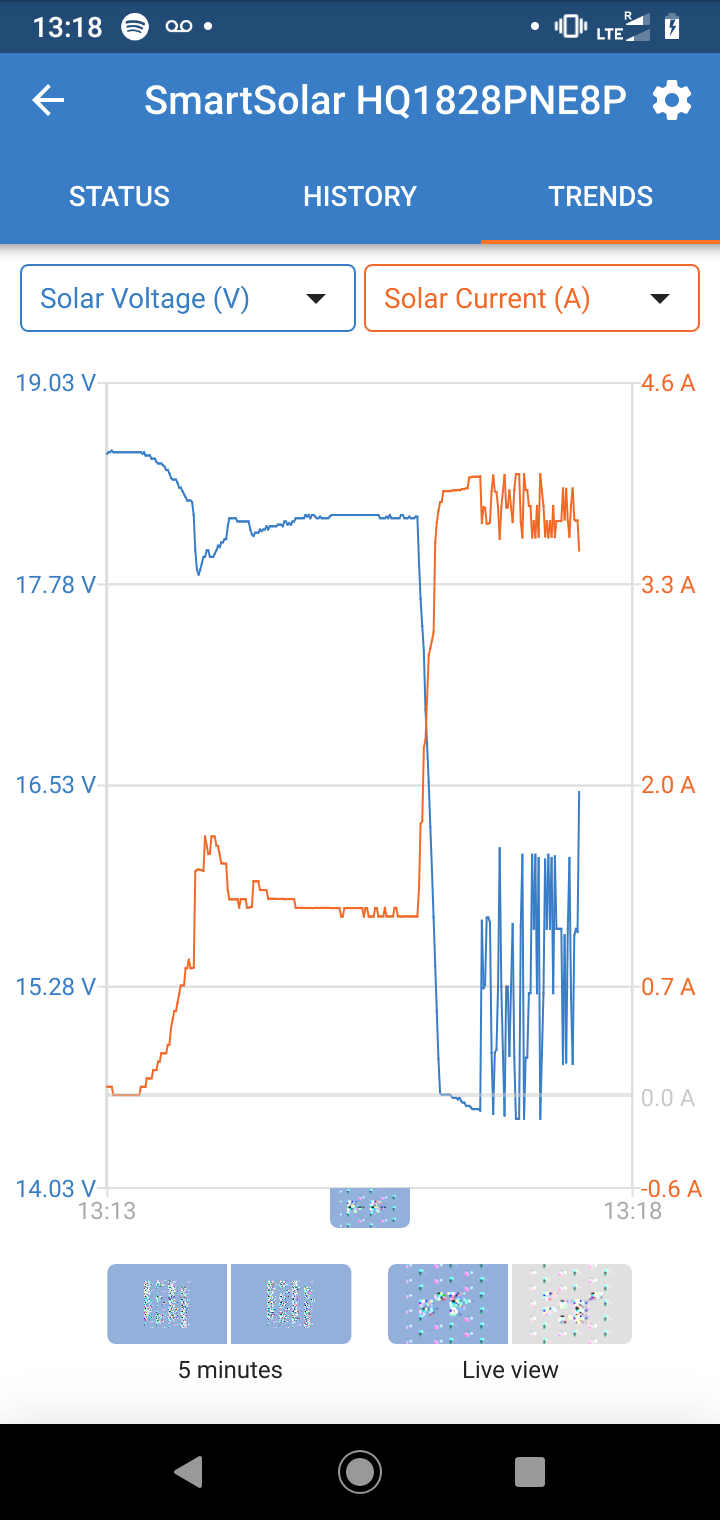Hi all,
I have a small solar setup in my converted van. 2x 100W panels wired (10AWG) to a Smartsolar 75/15 with newest firmware. The controller feeds a 105Ah Trojan lead acid deep cycle battery. For the load side I use the load output of the Smartsolar 75/15 as I'm only running small loads (mostly <5A).
What I realized is that my Solar output voltage drops from the should be 18-19V as soon as there is a bit of load (>1A) to 14-16V. This leads to the situation that especially during absorption the battery output is below the desired voltage. Also the overall watt I'm getting from the 2x 100W panels seems really low (~70-80W with direct midday sun exposure).
Any ideas what the issue could be? Wire sizing shouldn't be the issue as I'm running 10AWG wires between the panels/controller/battery, which should be more than enough). Could suboptimal connections/wire connectors create this issue (e.g. I have a breaker switch between the panel and the controller)? And is my assumption correct that the issue must be somewhere between the Solar Panel and controller, or could an issue on the battery/load size also create this effect?
Thanks for your help!
Alex


